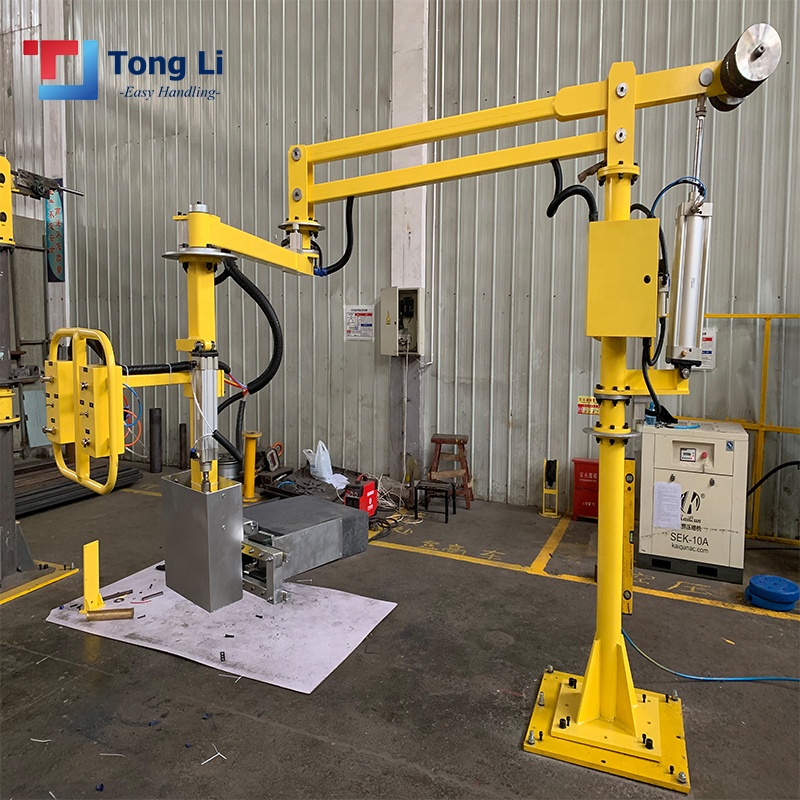Pneumatic manipulators are driven by pneumatic force (compressed air) and the movements of the gripping tooling are controlled by pneumatic valves.
The position of the pressure gauge and the adjustment valve varies according to the structure of the load attachment tooling. The manual adjustment is used when handling loads with the same weight for a long time. During the first handling cycle the balance pressure is adjusted manually with the adjustment valve. It will be adjusted again only when handling loads with a different weight. The balance pressure acts indirectly on the system cylinder, balancing the lifted load. When the load is lifted or lowered manually, a special pneumatic valve keeps the pressure in the cylinder steady, so that the load is in perfect “balance” conditions. The load is released only when it is put down, otherwise it is lowered in “braked” mode till it is put down. Balance pressure adjustment: If the weight of the load varies or a load is lifted for the first time, the control pressure on the adjustment valve must be set to zero. This is shown by a special pressure gauge, and the setting procedure is as follows: set the balance pressure to zero by means of the adjustment valve and check the pressure on the gauge; hook up the load to the tooling; press the “lifting” pushbutton (it could be the same as the hooking or attachment pushbutton); increase the balance pressure by turning the adjustment valve until the load balance is reached.
Safeties: In case of air supply failure, the system let the gripping tool move slowly down until it reaches the mechanical stop or the floor (both in “loaded” and “unloaded” condition). The movement of the arm around the axis is braked (lifting tool axes is optional).
Post time: Jun-27-2023


